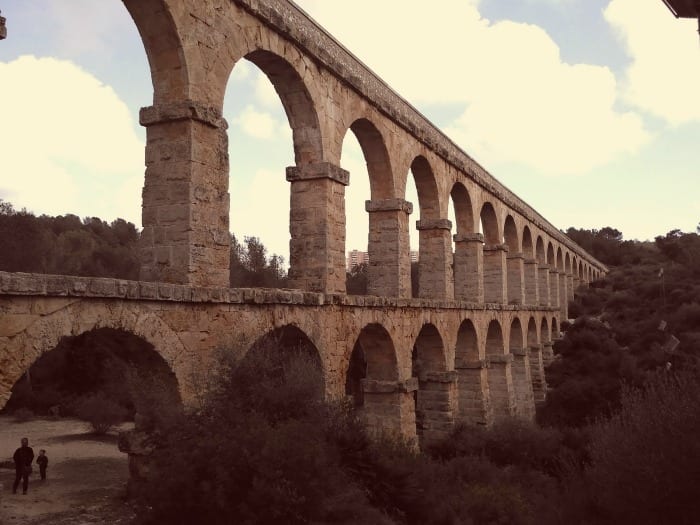
Traveling in your own country is a pleasure that I discovered a few years ago, which is why I have tried to chain destination after destination when there has been a minimal opportunity. The last has been Tarragona, a Catalan city whose multiple historical charms make it the great unknown to discover in a Spanish Mediterranean in which ancient Rome decided to build one of its great cities almost 2000 years ago. Best of all, such vestiges are still respected by Tarragona, that city that adapts to history.
Tarragona: from its amphitheater to the Roman Circus
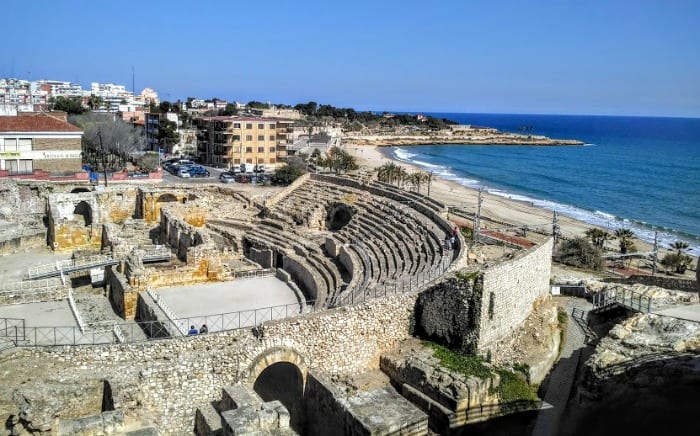
Arrived in this area of the Mediterranean throughout 218 BC during their confrontation with the armies of Carthage during the so-called Second Punic War for control of the Mediterranean, the Romans built the city of Tarraco throughout the 27st and XNUMXnd centuries BC. C .. What began as one of the most important military bases in Hispania Citerior was giving way to a flood of merchants and citizens from the other side of the Mediterranean in order to do business and discover that «New World», adapting the wall to a city growing large and reinforcing a glorious heritage, especially after the rise to power of Emperor Augustus in XNUMX BC
A city touched by the grace of the most powerful empire of antiquity and that, after its decline, also received Visigothic and Muslim influences during the conquest of the Arab empire of the Iberian Peninsula, as shown the narrow and delicious streets of the Old Town of Tarragona.
An amalgam of historical influences contained in the remains of an eroded wall and facing a bluish Mediterranean make up Tarragona, a Catalan city ideal for a weekend getaway and that allows tourists to explore its treasures in a short time. In fact, the older highlights The historical monuments of the city can be visited in a single afternoon, starting with that glorious Roman amphitheater turned into the cornerstone of the Archaeological Ensemble of Tarragona, designated as Unesco heritage in 2000.
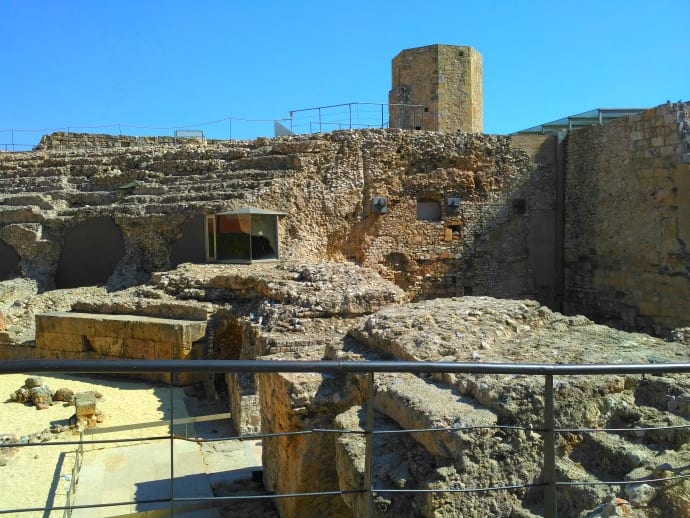
The amphitheater was the ancient playground of the empire and a place of combat between gladiators and wild animals, deposited directly from the sea and one of the main reasons for the location of this ancient theater. The views reveal a piece of purely Mediterranean history that encourages us to visit it, sit in its stands or lose ourselves among the remains of that Visigothic basilica of Santa María del Milagro whose Latin cross floor plan is sandwiched in the heart of the theater.
As we go to the northwest of the city we will see that, just five minutes away, the remains of the eastern head of the Roman Circus (yes, the same one in which those Ben-Hur-style chariot races were held and that was founded at the end of the second century BC) begins a circumference that is camouflaged between the buildings of the Upper Part of the city, and that is where the genius of this city resides: from the restaurants to the umpteenth branch of the Caixa de places like Plaça de la Font were built adapting to the remains of a quarter of the circus, turning the center of Tarragona into a curious combination of leisure and history, ideal for getting lost.
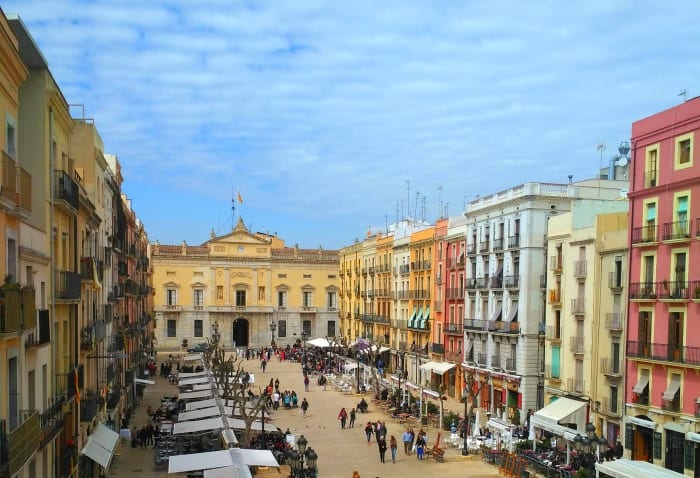
The old town of Tarragona exudes a bohemian atmosphere, colorful houses, cute restaurants (I recommend Piscolabis, in Plaça de la Font, its risotto seafood or its bacon salad with goat cheese) and even street art samples such as the facade of Plaça del Sedassos in which the artist Carles Arola tries to immortalize some of the most festive and typical aspects of Catalan folklore.
Un colorful show after which we will ascend these steep streets to the curious Arco de Roser, the remains of the Wall or the beautiful Cathedral of Santa María de Tarragona, in Gothic style and built between the XNUMXth and XNUMXth centuries.
Tarragona: past and future in a single city
The following itinerary may be perfect for a first day in the city, reserving more peripheral location attractions for a second day.
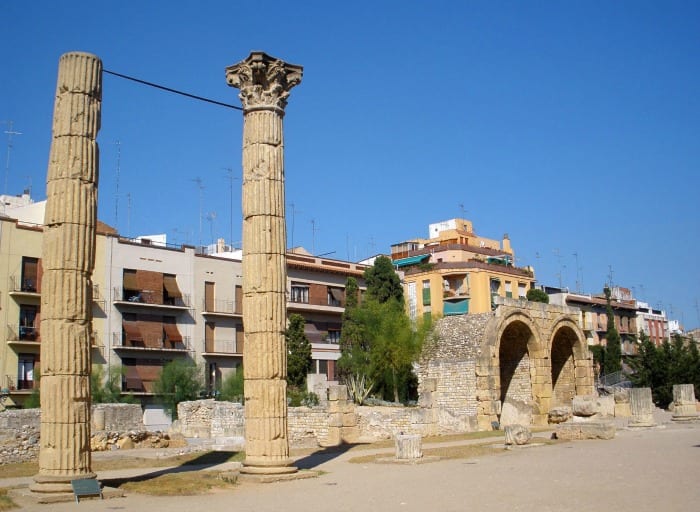
Photos: © AlbertoPiernas
Specifically, if we leave the Upper Part behind and cross the Rambla Nova, the main artery of the city, we will arrive at the Local Roman Forum or Fòrum de la Colònia, where the vestiges of a Roman square separated by Calle Soler and joined together can be appreciated. using a bridge. A scene included in the set designated by Unesco and in whose perimeter we find from old wells to columns of Corinthian order in which it was the main meeting point between the elite of the Empire.
Our route continues towards the west, specifically on the banks of a Francolí river in front of which the remains of the Paleo-Christian Necropolis still sigh, in which the deceased of the Roman Empire were buried. The authorities preferred to do it here, on the banks of the roads of the city and peripheral area of Tarraco.

Photo: Wikipedia ©
Throughout the visit, you can discover the mortuary space in which Bishop Fructuoso was buried, the most noted martyr of the Christian persecution that was so prevalent in the times of the Empire.
Finally, and leaving history behind, our eyes will notice the bucolic walls of a huge building. This is the Smart Parc Tabacalera project, an old tobacco factory founded in 1923 and closed in 2007 that the Tarragona City Council has reinvented by applying vertical gardens and reusing its interior spaces for various cultural activities.
The best (and most sustainable) brooch to end our tour of a city obsessed with preserving its past, without forgetting a future in which green shoots are more necessary than ever.
A weekend in Tarragona It can be one of the best excuses to make a getaway during these spring months when the terraces invite you to have a shampoo (or Catalan version of lemon white) and let yourself be enveloped by the historical charm of the city that will host the 2018 Mediterranean Games.
Have you ever visited Tarragona?